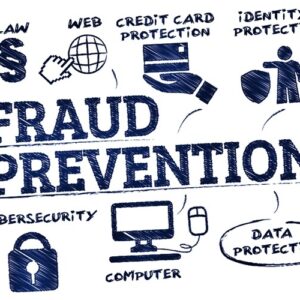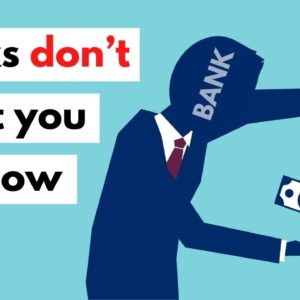
Outline:
1. Introduction
- The hidden impact of daily habits on your finances.
- The importance of understanding how small habits can lead to bigger financial issues.
- Purpose of the blog post.
2. The Connection Between Habits and Financial Health
- How habits shape your spending.
- Why small daily habits can add up over time.
- The psychology of habit formation.
3. Understanding Behavioral Triggers: What Are They?
- Definition of behavioral triggers.
- How behavioral triggers influence your financial decisions.
- The role of emotional and environmental cues.
4. The Most Common Behavioral Triggers That Affect Your Finances
- Impulse spending and its triggers.
- Emotional spending: How feelings influence financial decisions.
- Social comparison and peer pressure in spending.
5. The Role of Convenience in Sabotaging Your Finances
- How easy access to spending encourages overspending.
- The convenience of online shopping and its dangers.
- Subscription services: The hidden cost of convenience.
6. The Power of Marketing and Advertising: How It Manipulates Your Spending
- How marketing messages trigger purchases.
- The role of psychological pricing tactics.
- The “fear of missing out” (FOMO) effect.
7. Mindless Spending: The Habit of Buying Without Thinking
- What is mindless spending?
- Common situations where people spend without thought.
- How this type of spending can lead to financial problems.
8. The Danger of “Just This Once” Mentality
- How the occasional splurge can become a habit.
- The snowball effect of small indulgences.
- Why we justify small purchases.
9. The Impact of Stress on Financial Decision-Making
- The relationship between stress and impulsive financial decisions.
- How stress affects our ability to make rational choices.
- Strategies for managing stress-related spending.
10. Poor Financial Planning and the Habit of Living Paycheck-to-Paycheck
- How a lack of planning can perpetuate financial struggles.
- The dangers of neglecting savings and investments.
- The importance of budgeting and forecasting.
11. Over-Reliance on Credit Cards: The Habit of “Buy Now, Pay Later”
- How credit cards contribute to financial strain.
- The psychology of “buy now, pay later” mindset.
- Why it’s easy to ignore the consequences of credit card debt.
12. How Social Media Affects Your Financial Decisions
- The effect of social media on spending habits.
- Why “Instagram envy” leads to unnecessary purchases.
- The comparison trap and financial insecurity.
13. The Power of Small Daily Changes: Breaking Bad Financial Habits
- How changing small habits can have a big impact.
- Simple strategies to improve financial health daily.
- The importance of consistency in building good habits.
14. Solutions to Break Free from These Financial Sabotaging Habits
- Tips for identifying and overcoming behavioral triggers.
- Practical steps to combat impulse spending.
- How to create new habits that promote financial stability.
15. Conclusion: Take Control of Your Finances by Taking Control of Your Habits
- Recap the importance of understanding and managing habits.
- Final thoughts on financial well-being and habit management.
16. FAQs
- What are behavioral triggers in spending?
- How can I break the habit of impulse buying?
- Why does stress affect my spending habits?
- Can changing my daily habits improve my finances?
- How do I stop comparing my financial situation to others?
READ MORE: Geopolitics and Global Real Estate: How International Policies Either Propel or Destroy Property Markets
Are Your Daily Habits Ruining Your Finances? Critical Behavioral Triggers You MUST Avoid to Safeguard Your Wealth and Achieve Financial Freedom!
Introduction: The Hidden Impact of Daily Habits on Your Finances
Have you ever found yourself making small purchases here and there without thinking much about them, only to realize later that you’ve spent way more than you intended? The truth is, your daily habits might be sabotaging your finances in ways you don’t even realize. From emotional spending to impulsive buys, seemingly harmless habits can accumulate and lead to significant financial strain over time.
But how can something as small as a morning coffee or a quick online purchase affect your bottom line? In this blog post, we will dive deep into the behavioral triggers that shape your financial decisions. By understanding these triggers, you can take proactive steps to change your habits and regain control over your money.
The Connection Between Habits and Financial Health
The way we manage our finances is largely influenced by our daily habits. Whether it’s the decision to skip packing lunch and buying takeout, or the unconscious swipe of a credit card to satisfy an emotional need, habits shape how we save, spend, and invest.
Many people think that financial health is determined by big decisions—like choosing a high-interest savings account or making wise investment choices—but the truth is that small, everyday choices are what really add up. Habits are incredibly powerful and often operate in the background of our decision-making process, so it’s crucial to identify them.
The psychology behind habit formation suggests that when you perform an action repeatedly, it becomes automatic. Over time, these small behaviors become ingrained, and even if you’re not consciously thinking about them, they continue to influence your financial outcomes.
Understanding Behavioral Triggers: What Are They?
A behavioral trigger is an external or internal cue that prompts a certain reaction or behavior. In terms of personal finance, these triggers can cause us to make purchases or financial decisions that we may not have otherwise made.
These triggers can come in many forms:
- Emotional cues, like stress or sadness.
- Environmental cues, such as seeing a sale sign.
- Social cues, like a friend purchasing something you want.
Understanding how these triggers work is essential in breaking the cycle of poor financial decisions. When you can identify the triggers, you can begin to manage and control the way they affect your spending behavior.
The Most Common Behavioral Triggers That Affect Your Finances
Several behavioral triggers play a significant role in influencing your spending patterns. Let’s break down some of the most common ones:
Impulse Spending and Its Triggers
Impulse spending is one of the most common financial pitfalls. It’s that spontaneous purchase that you make on a whim, often in the heat of the moment. Common triggers include:
- Seeing an item on sale.
- Feeling stressed or anxious and wanting a quick way to feel better.
- Browsing online shopping websites mindlessly.
While it might feel good in the moment, impulse buying can easily derail your budget and lead to financial strain over time.
Emotional Spending: How Feelings Influence Financial Decisions
Emotions play a huge role in our financial decisions. Emotional spending occurs when we make purchases based on our current mood, such as:
- Buying something to cheer yourself up after a tough day.
- Splurging to cope with feelings of inadequacy or stress.
- Treating yourself to something special after an accomplishment.
While emotional spending can provide temporary relief, it rarely addresses the root causes of the emotions, and it often leads to buyer’s remorse and buyer’s regret later on.
Social Comparison and Peer Pressure in Spending
Social comparison is a powerful motivator for spending. Whether it’s seeing friends or influencers showcasing the latest gadgets, clothing, or experiences, it can trigger the urge to keep up with others, even when it’s outside of your budget. This is known as peer pressure in spending.
You may have noticed that it’s easier to spend money when you see people around you doing the same. It’s essential to recognize these triggers and avoid making financial decisions based on external influences.
The Role of Convenience in Sabotaging Your Finances
One of the most dangerous behavioral triggers is the convenience factor. With technology making shopping easier than ever, it’s never been simpler to purchase things on a whim. Whether it’s a click on an online store or a subscription service, the ease of access makes it incredibly tempting to overspend.
How Easy Access to Spending Encourages Overspending
Mobile apps, online shopping, and even payment methods like Apple Pay or Google Pay allow for one-click transactions, making it all too easy to buy things impulsively. The problem is, we often don’t fully consider the consequences of these actions when they are this easy.
Subscription Services: The Hidden Cost of Convenience
Subscription services like Netflix, Spotify, and meal kit deliveries are often marketed as affordable, but they add up over time. Many people forget they’re paying for multiple subscriptions that they don’t always use, leading to unnecessary expenditures. Subscriptions are convenient, but they can easily become a financial drain if not kept in check.
The Power of Marketing and Advertising: How It Manipulates Your Spending
Marketing and advertising are carefully designed to trigger specific emotions and actions, often influencing you to buy things you don’t need. Advertisements are everywhere—on social media, in stores, and even in your inbox.
How Marketing Messages Trigger Purchases
Advertisers know how to trigger emotional responses. From limited-time offers to product scarcity, marketers are skilled at creating urgency and desire. These tactics prey on our fear of missing out (FOMO) and our desire to keep up with trends, leading to impulsive purchases.
The Role of Psychological Pricing Tactics
Pricing strategies such as “$9.99” instead of “$10.00” are designed to make us feel like we’re getting a better deal. These small changes can trick us into thinking we’re spending less, when in reality, we’re spending more.
The “Fear of Missing Out” (FOMO) Effect
FOMO is a powerful psychological trigger that marketers capitalize on. Whether it’s a limited-time offer or a trending product, the fear of missing out can drive people to make hasty, unplanned purchases.
Mindless Spending: The Habit of Buying Without Thinking
Mindless spending happens when you buy things without much thought or intention. It’s the small purchases that seem harmless but add up over time. Whether it’s grabbing a snack on your way out the door or subscribing to an app, mindless spending can easily become a habit.
The Danger of “Just This Once” Mentality
We’ve all been there. We justify buying something with the excuse that it’s just one small purchase. But, when we indulge in this mentality too often, these small purchases begin to add up, leading to bigger financial problems.
The Impact of Stress on Financial Decision-Making
Stress is a significant behavioral trigger that affects decision-making. Under stress, we often make poor choices—like overspending or neglecting our financial responsibilities—because we’re looking for a quick way to alleviate the pressure.
Poor Financial Planning and the Habit of Living Paycheck-to-Paycheck
Living paycheck-to-paycheck is often a consequence of poor financial planning. Without a budget, emergency savings, or long-term financial goals, it becomes difficult to break free from this cycle. Poor planning can lead to reliance on credit cards and loans to cover basic expenses.
Over-Reliance on Credit Cards: The Habit of “Buy Now, Pay Later”
The “buy now, pay later” mentality, facilitated by credit cards, makes it easy to overspend without considering the long-term impact. Credit card debt can quickly spiral out of control if not managed carefully.
How Social Media Affects Your Financial Decisions
The influence of social media cannot be underestimated. Constant exposure to curated, idealized versions of other people’s lives can trigger feelings of inadequacy or the desire to “keep up.”
The Power of Small Daily Changes: Breaking Bad Financial Habits
If you’re ready to take control of your finances, small daily changes can make a big difference. Whether it’s setting up automatic savings, planning your meals, or cutting back on impulse buys, making incremental improvements can lead to long-term financial health.
Solutions to Break Free from These Financial Sabotaging Habits
To regain control over your finances, it’s essential to recognize and address these behavioral triggers. Building good financial habits requires time, discipline, and consistency, but it’s entirely possible. Start small, track your progress, and gradually work your way toward a healthier financial future.
Breaking free from financially sabotaging habits is possible, and it starts with recognizing the patterns and taking proactive steps to change them. Whether it’s impulse spending, emotional buying, or relying too much on credit, the road to financial freedom involves reshaping your daily behaviors and understanding the underlying triggers. Below are some actionable solutions that can help you overcome these habits and regain control of your financial situation.
1. Create a Detailed Budget and Stick to It
The foundation of good financial health begins with budgeting. A well-structured budget allows you to track your income and expenses, helping you understand exactly where your money is going. It also gives you the framework to control your spending and avoid unnecessary expenses.
How to do it:
- Start by listing all your income sources.
- Categorize your expenses (e.g., housing, transportation, groceries, entertainment).
- Set a limit for each category based on your income and priorities.
- Use budgeting tools (like Mint, YNAB, or a simple spreadsheet) to track your progress.
Benefits:
- Helps you manage your money better and prevents overspending.
- Increases awareness of where you can cut back.
2. Set Specific Financial Goals
Having clear financial goals gives you direction and purpose. Without goals, it’s easy to get caught up in daily habits that lead to financial instability. Whether your goals are to pay off debt, save for a vacation, or build an emergency fund, having a target to work toward can significantly improve your financial decision-making.
How to do it:
- Set short-term (e.g., save $500 this month) and long-term (e.g., pay off credit card debt in two years) goals.
- Break down each goal into smaller, actionable steps.
- Track your progress regularly to stay motivated.
Learn more about setting financial goals in this guide to goal setting.
Benefits:
- Encourages purposeful spending.
- Gives you something to work toward, preventing impulse purchases.
3. Practice Mindful Spending
One of the most effective ways to break free from mindless spending is by practicing mindful spending. Mindful spending involves taking a step back and carefully evaluating whether a purchase is truly necessary or if it’s being driven by an emotional or external trigger.
How to do it:
- Before making any purchase, ask yourself: “Do I really need this?”
- Wait 24 hours before making non-essential purchases to allow time for reflection.
- Avoid shopping when you’re emotional or stressed.
To dive deeper into mindful spending, check out this guide to mindful spending.
Benefits:
- Helps prevent impulse buys and emotional spending.
- Encourages conscious choices about where your money goes.
4. Implement the “Envelope System” for Cash-Only Spending
For many people, using credit cards leads to overspending because it’s too easy to make purchases without thinking. The envelope system is a tried-and-true method that uses cash to limit how much you can spend in certain categories.
How to do it:
- Take out cash for specific categories of spending (e.g., entertainment, dining out).
- Once the cash is gone, you can’t spend any more in that category for the month.
- Track any cash you have left and carry it over to the next month for savings or investment.
Benefits:
- Limits overspending in specific categories.
- Creates an easy way to stay within your budget.
Find out more about the envelope system and how it can help you save money in this guide.
5. Use the 50/30/20 Rule for Simple Financial Planning
The 50/30/20 rule is an easy-to-follow guideline for managing your income. It helps you divide your income into three categories: needs, wants, and savings.
How to do it:
- Allocate 50% of your income to needs (rent, utilities, transportation).
- Allocate 30% to wants (entertainment, dining out, hobbies).
- Allocate 20% to savings and debt repayment.
Benefits:
- Provides a simple framework for managing your finances.
- Ensures that you’re saving and investing while still allowing for some discretionary spending.
To learn more about this budgeting rule, check out this 50/30/20 budget breakdown.
6. Cut Back on Subscriptions and Unnecessary Recurring Costs
Subscription services have become one of the most insidious ways people overspend. These recurring payments often go unnoticed, but they can add up significantly over time. Whether it’s streaming services, gym memberships, or apps, you might be paying for things you don’t even use regularly.
How to do it:
- Review your subscriptions and cancel any that you don’t use or need.
- Consider switching to lower-cost options for services you use.
- Track your subscriptions monthly to ensure they’re still worth the cost.
For tips on how to manage subscriptions, check out this guide to cutting out subscription services.
Benefits:
- Reduces wasteful spending on services you don’t need.
- Frees up money for savings or debt repayment.
7. Build an Emergency Fund to Avoid Stress-Driven Spending
A lack of savings is a significant trigger for stress-induced spending. When unexpected expenses arise, people often turn to credit cards or loans, which can create a cycle of debt. Having an emergency fund can help reduce financial anxiety and prevent impulsive financial decisions.
How to do it:
- Set aside a specific percentage of your income each month for an emergency fund.
- Aim for at least 3-6 months’ worth of living expenses in the fund.
- Keep the emergency fund in a separate account to avoid spending it on non-emergencies.
Learn how to build your emergency fund with this step-by-step guide.
Benefits:
- Provides a financial cushion during tough times.
- Reduces the likelihood of stress-driven, impulsive spending.
8. Track Your Spending Regularly to Identify Problem Areas
One of the best ways to stay in control of your finances is by consistently tracking your spending. When you track your spending, you can identify patterns that may be leading to overspending.
How to do it:
- Use an app or spreadsheet to track every expense, no matter how small.
- Review your spending at the end of each week or month.
- Look for areas where you’re overspending and make adjustments.
For an easy-to-follow tracker, check out this expense tracker template.
Benefits:
- Increases financial awareness.
- Helps identify areas where you can cut back on spending.
9. Take a “Spending Fast” to Reset Your Habits
A spending fast is a great way to reset your financial habits and break free from impulsive buying. It involves taking a break from non-essential spending for a specific period.
How to do it:
- Choose a set period (e.g., one week or one month) where you only spend on essentials like food, transportation, and bills.
- During this period, reflect on your spending habits and identify areas of improvement.
- After the fast, continue practicing mindful spending.
Get inspiration for your own spending fast with this challenge guide.
Benefits:
- Helps you reset your spending habits.
- Increases awareness of unnecessary purchases.
10. Seek Professional Help if Needed
If your financial habits are deeply ingrained and you find it difficult to break free from them on your own, it might be time to seek the help of a professional financial advisor. A financial planner can provide personalized guidance and create a strategy to help you manage your money better.
How to do it:
- Research certified financial planners in your area.
- Choose someone who specializes in the areas you need help with (e.g., budgeting, debt management, retirement planning).
- Work with your advisor to create a personalized financial plan.
Learn more about finding a certified financial planner in this article on choosing a financial advisor.
Benefits:
- Provides personalized, expert advice.
- Helps you create a realistic financial plan to overcome bad habits.
By implementing these practical solutions, you can break free from sabotaging financial habits and regain control over your financial future. Whether it’s creating a budget, eliminating unnecessary subscriptions, or practicing mindful spending, taking small steps every day will lead to significant improvements over time. Remember, the key is consistency and being proactive about managing your financial triggers.
Conclusion: Take Control of Your Finances by Taking Control of Your Habits
Your financial health is directly linked to the habits you form. By understanding the triggers that influence your spending decisions, you can begin to break free from destructive patterns and take charge of your financial future. Whether it’s practicing mindful spending, managing stress better, or making more informed purchases, taking control of your habits is the first step toward financial freedom.
FAQs:
- What are behavioral triggers in spending?
Behavioral triggers are psychological, emotional, or environmental cues that prompt an individual to make a financial decision, such as an impulse purchase. - How can I break the habit of impulse buying?
You can break the habit of impulse buying by recognizing your triggers, setting a budget, and practicing mindful spending. - Why does stress affect my spending habits?
Stress can lead to impulsive spending as a way of seeking temporary relief from emotional discomfort. Managing stress through healthier methods can reduce this impulse. - Can changing my daily habits improve my finances?
Yes! Small, consistent changes in your habits can lead to better financial health, such as budgeting, avoiding impulse buys, and setting long-term financial goals. - How do I stop comparing my financial situation to others?
Focus on your own financial goals and progress, and remind yourself that everyone’s financial journey is different.







